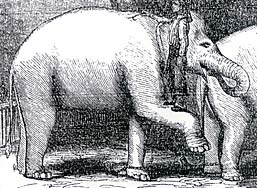The Animals on Display ExhibitThe Lost Museum Archive

Barnum decorated his American Museum with huge pictures of animals to draw in crowds eager to see exotic animals before the common exhibition of animals in zoos and circuses. While Barnum stressed his contribution to increased understanding of natural history by exhibiting exotic animals from around the world, the promotion of the animal exhibits relied on sensationalism as much as education. Ads and newspaper coverage often highlighted the difficulties in capturing animals as well as their fragility in captivity. The Happy Family Display claimed that the wide range of animals enclosed in one case, including natural predators and their prey, lived in harmony. In 1866, Barnum’s new museum drew the attention of the newly formed American Society for the Prevention of Cruelty to Animals. The ASPCA director Henry Bergh objected to the public feeding of live rabbits to snakes.